ST elevation myocardial infarction EKG examples
|
ST Elevation Myocardial Infarction Microchapters |
|
Differentiating ST elevation myocardial infarction from other Diseases |
|
Diagnosis |
|
Treatment |
|
|
Case Studies |
|
ST elevation myocardial infarction EKG examples On the Web |
|
Directions to Hospitals Treating ST elevation myocardial infarction |
|
Risk calculators and risk factors for ST elevation myocardial infarction EKG examples |
Editor-In-Chief: C. Michael Gibson, M.S., M.D. [1]
EKG Examples
Shown below is an EKG demonstrating the evolution of an infarct on the EKG. ST elevation, Q wave formation, T wave inversion, normalization with a persistent Q wave suggest STEMI.

Copyleft image obtained courtesy of ECGpedia, http://en.ecgpedia.org/wiki/File:AMI_evolutie.png
Anterior Myocardial Infarction
Shown below is an EKG demonstrating loss of R waves throughout the anterior wall (V1-V6). QS complexes in V3-V5. ST elevation in V1-V5 with terminal negative T waves.
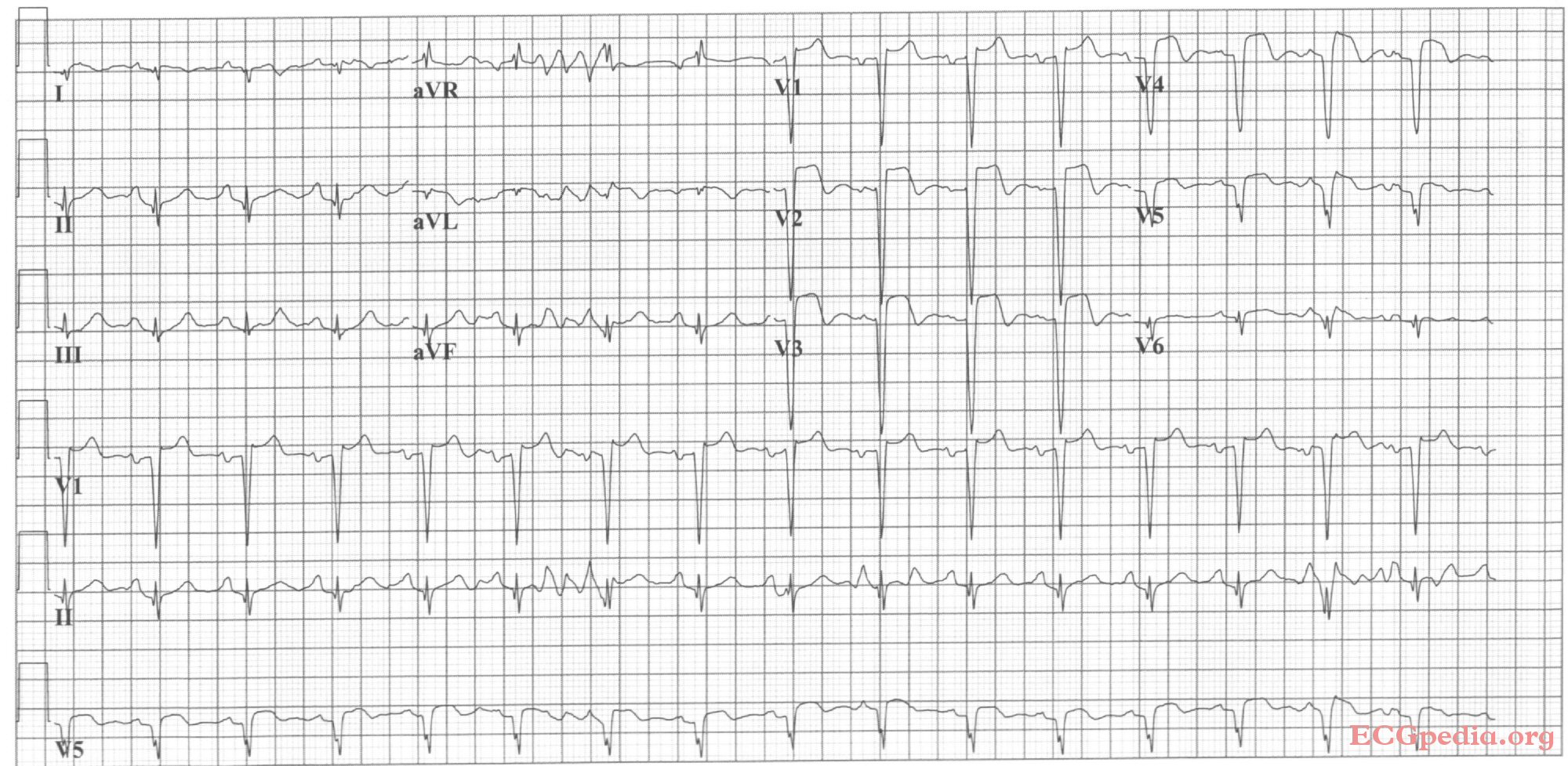
Copyleft image obtained courtesy of, http://en.ecgpedia.org/wiki/Main_Page
Shown below is an EKG demonstrating acute anterior MI. LAD artery occlusion.
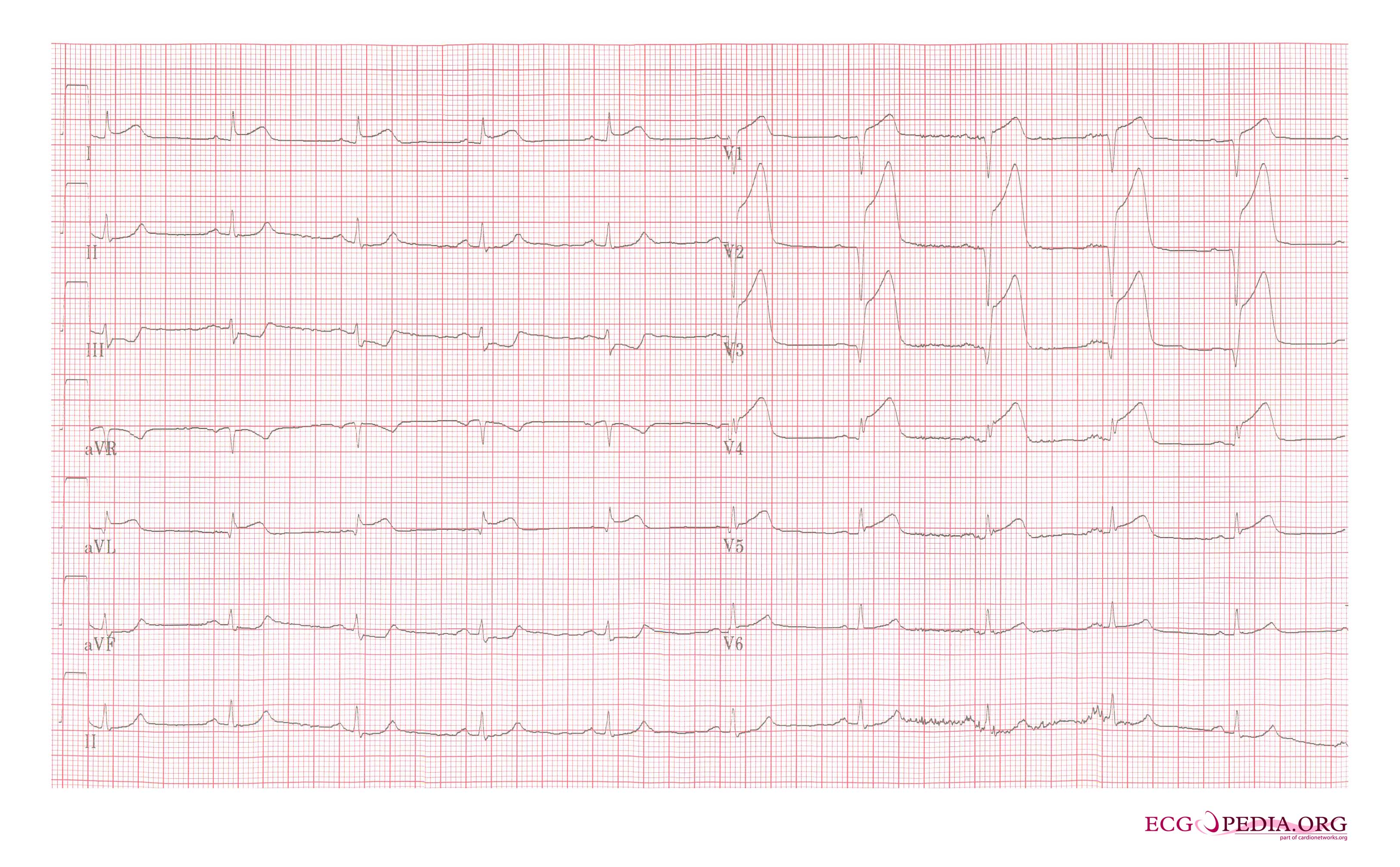
Copyleft image obtained courtesy of, http://en.ecgpedia.org/wiki/Main_Page
Shown below is an EKG showing sinus rhythm with anteroseptal myocardial infarction depicting ST elevation in V1-V6 and in lead I.

Copyleft image obtained courtesy of, http://en.ecgpedia.org/wiki/Main_Page
Anterolateral Myocardial Infarction
Shown below is an EKG demonstrating sinus rhythm. The remarkable feature is the poor R wave progression in the V1 and V2 leads and the ST elevation and T wave changes in leads V1 to V4 and I and aVL. The cardiogram suggests an anterior/ lateral MI possibly acute. There is also terminal P wave negativity in V1 suggesting a left atrial abnormality.
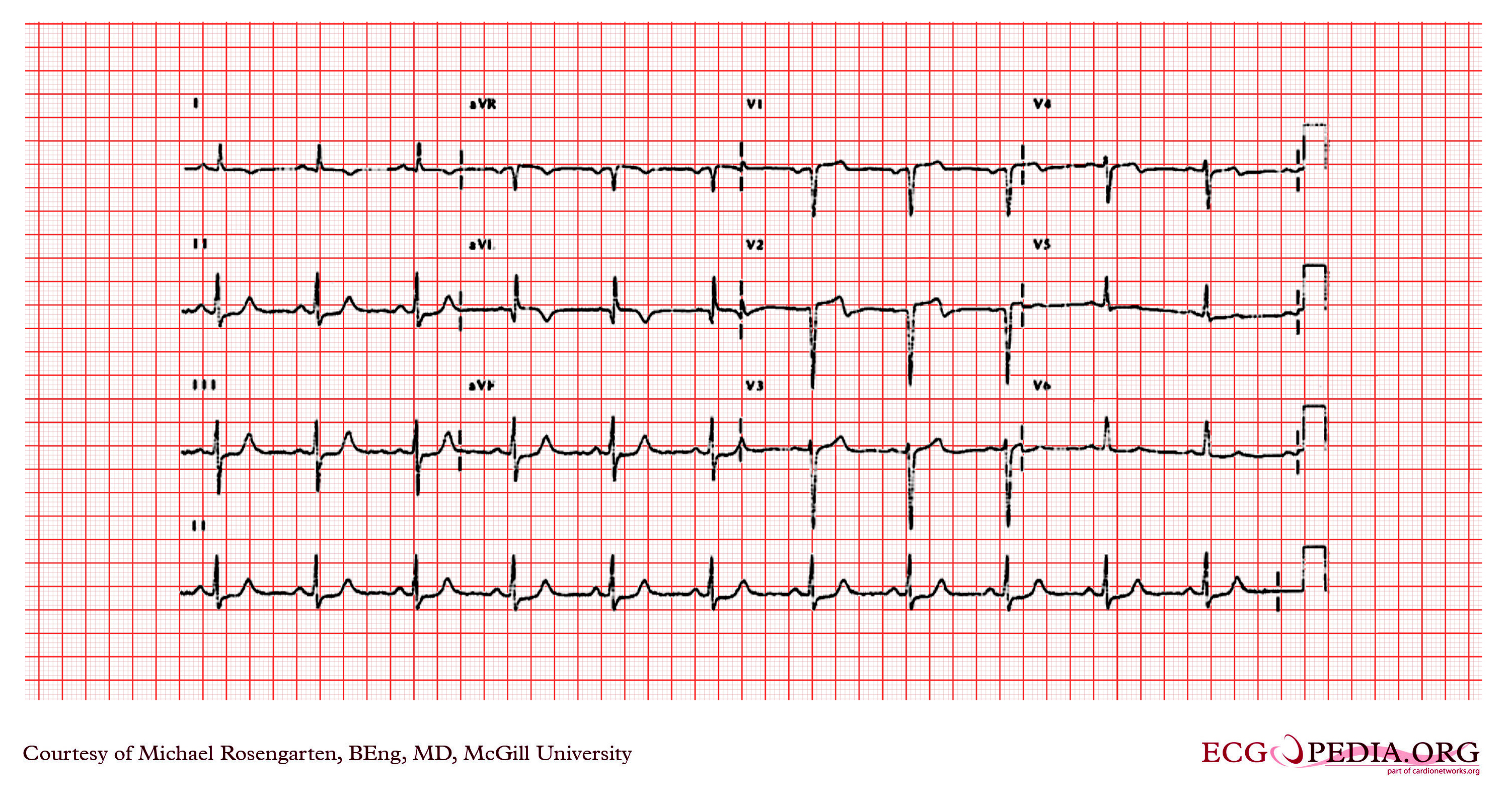
Copyleft image obtained courtesy of, http://en.ecgpedia.org/wiki/File:E209.jpg
Inferior Myocardial Infarction
Shown below is an EKG demonstrating ST elevation in the precordial and limb leads depicting acute inferior MI.
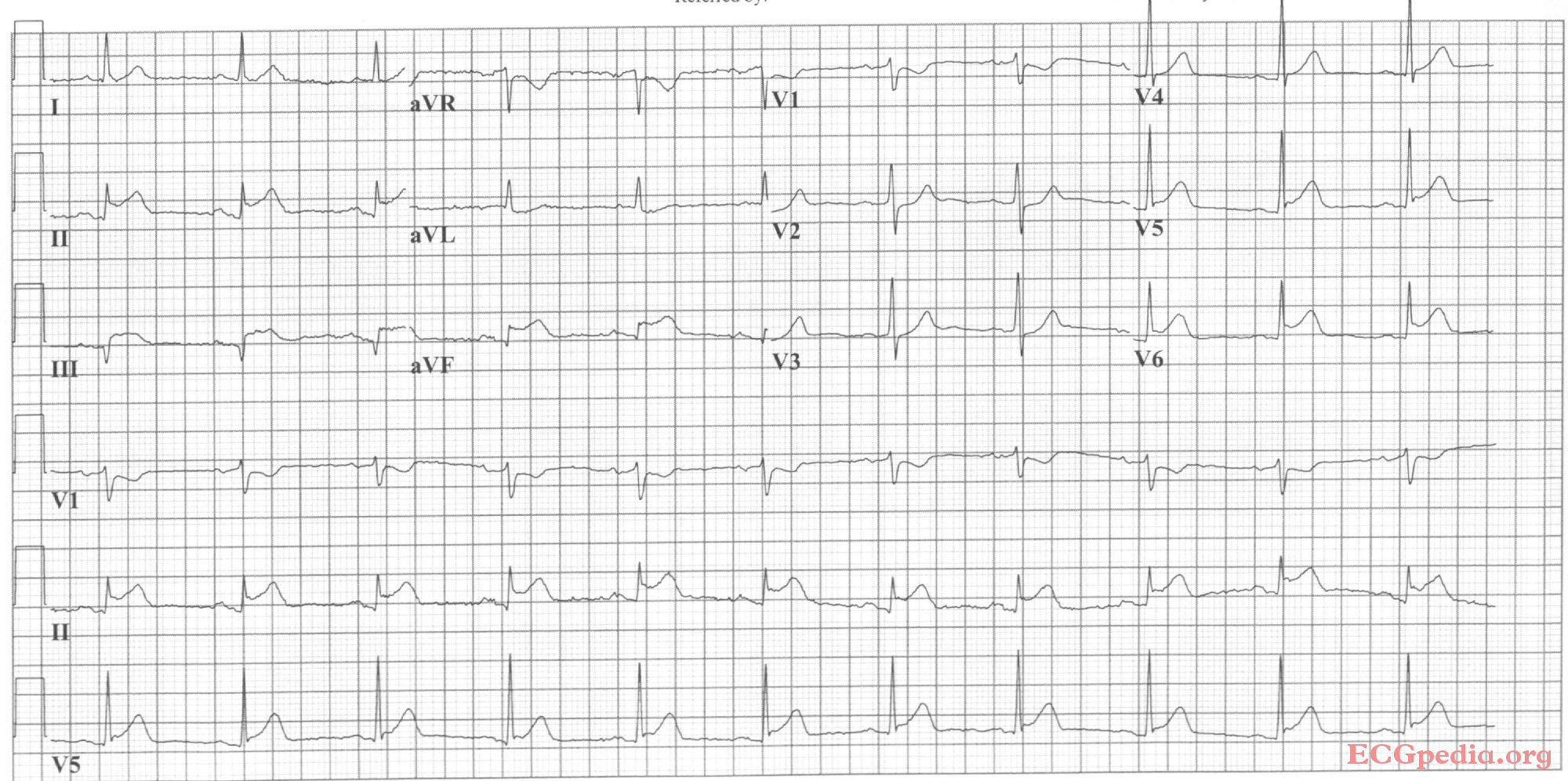
Copyleft image obtained courtesy of, http://en.ecgpedia.org/wiki/Main_Page
Shown below is an EKG demonstrating changes during acute inferior MI depicting ST elevation in leads II, III and aVF.

Copyleft image obtained courtesy of, http://en.ecgpedia.org/wiki/Main_Page
Posterior Myocardial Infarction
Shown below is an EKG with ST elevation in II, III, aVF (in III > II), ST depression in I, aVL, V2. Tall R in V2, otherwise normal QRS morphology. The findings are suggestive of acute posteroinferior MI.
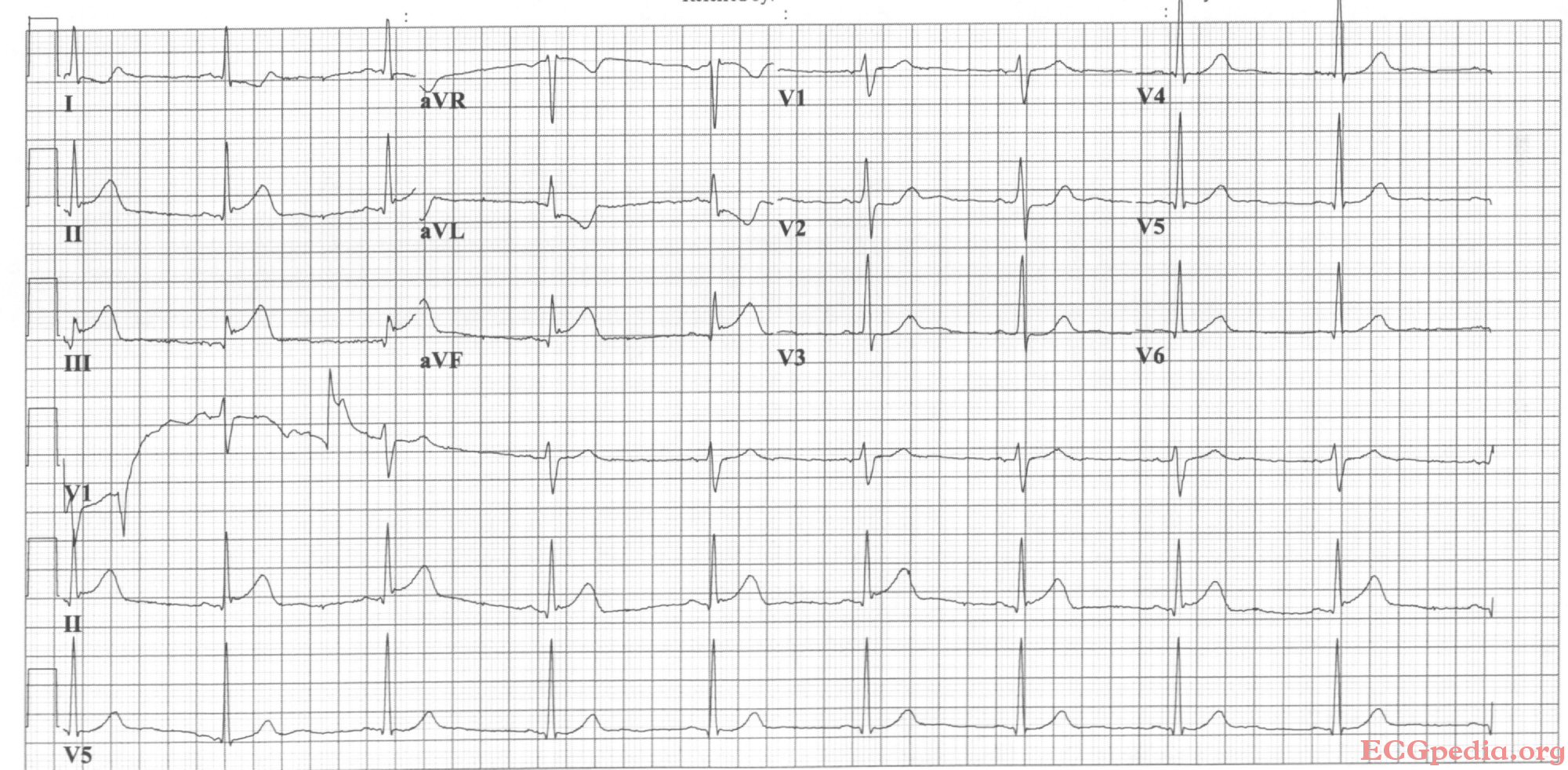
Copyleft image obtained courtesy of, http://en.ecgpedia.org/wiki/Main_Page
Shown below is an EKG demonstrating changes during acute posterolateral MI depicting ST depression in precordial leads V2-V6.

Copyleft image obtained courtesy of, http://en.ecgpedia.org/wiki/Main_Page
Infero-Posterior Myocardial Infarction
Shown below is an EKG with ST depression in V1, V4, tall R in V2. ST elevation in II, III, aVF, V5 and V6.
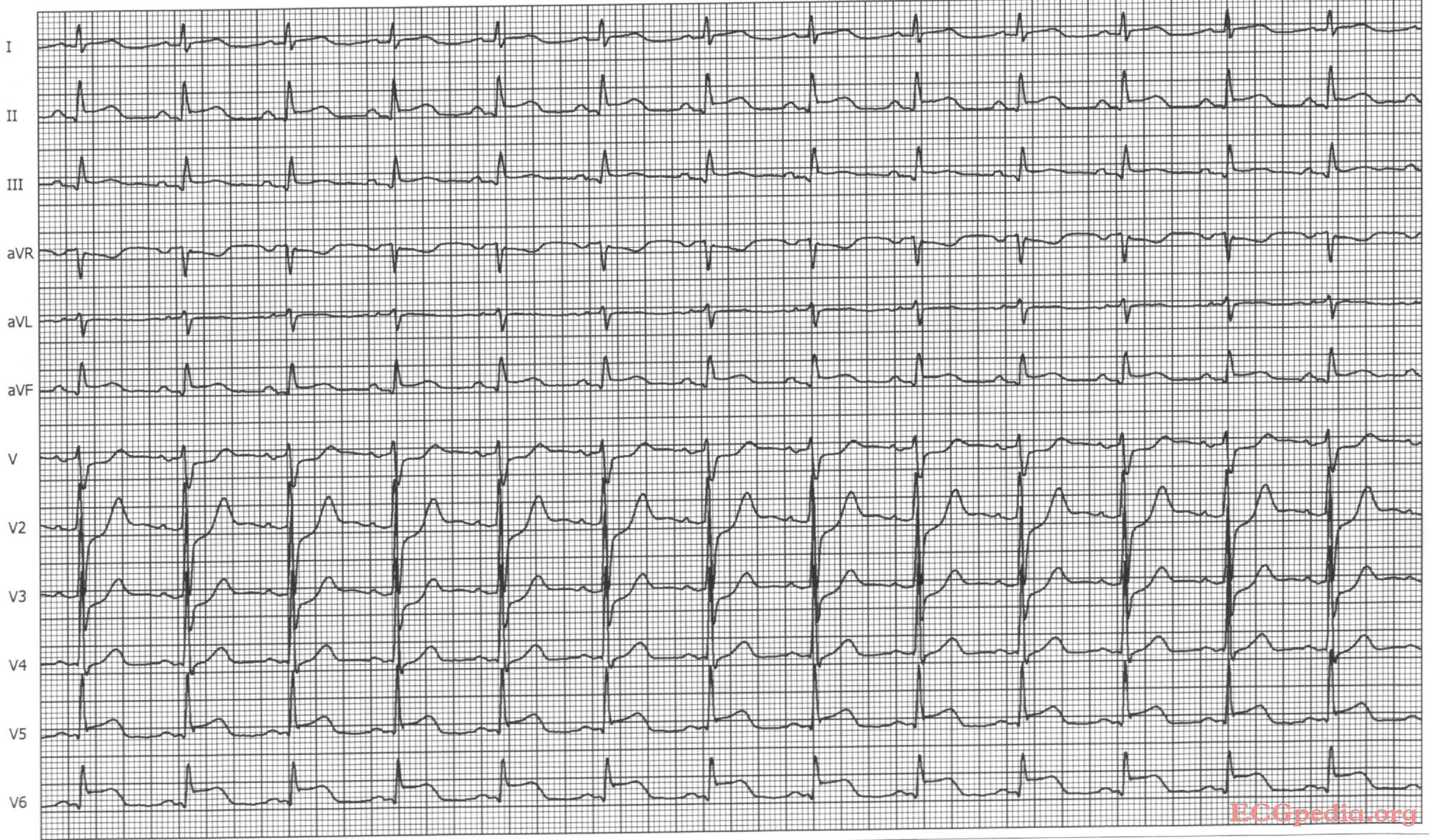
Copyleft image obtained courtesy of, http://en.ecgpedia.org/wiki/Main_Page
Shown below is an EKG with sinus bradycardia with first degree AV block and inferior-posterior-lateral myocardial infarction.

Copyleft image obtained courtesy of, http://en.ecgpedia.org/wiki/Main_Page
Shown below is an EKG depicting sinus bradycardia with inferior-lateral myocardial infarction.

Copyleft image obtained courtesy of, http://en.ecgpedia.org/wiki/Main_Page
Right Ventricular Myocardial Infarction
Shown below is an EKG demonstrating ST elevation in lead V1 and aVR; reversal of V6.

Copyleft image obtained courtesy of, http://en.ecgpedia.org/wiki/Main_Page
Shown below is an EKG demonstrating STEMI changes in the right precordial leads.

Copyleft image obtained courtesy of, http://en.ecgpedia.org/wiki/Main_Page